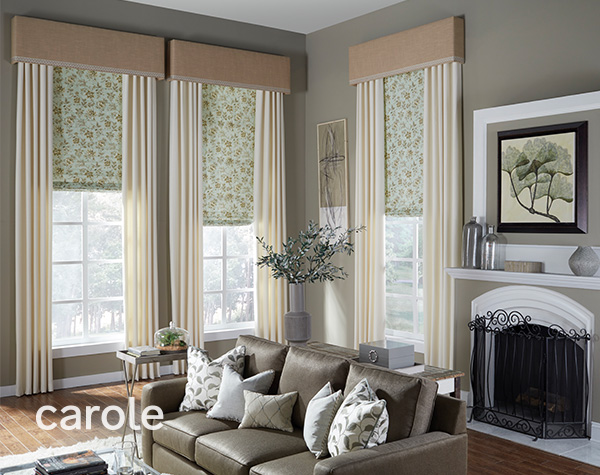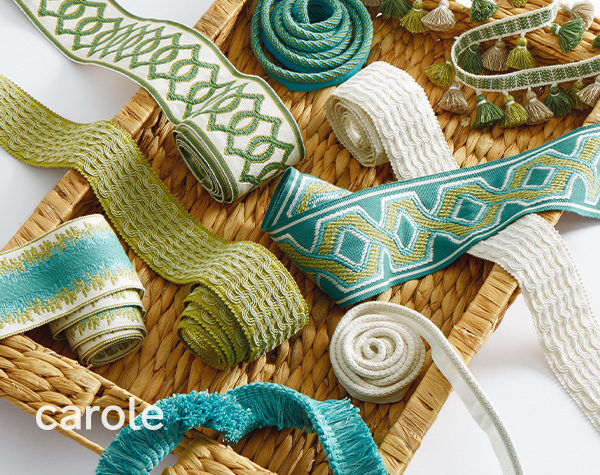
Bright & Bold – Paramount Trimmings Collection
June 19, 2020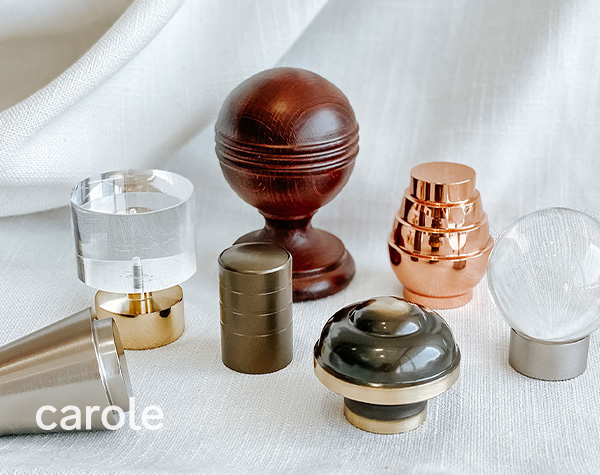
The Final Touch: Drapery Hardware
November 16, 2020Sheltering in place has given us the opportunity to spend significantly more time in our homes. Many of us are working from home and might be for some time. We will eat‑in more and socialize in small groups at home. Isn’t it time to take a good look at our homes and make them the most comfortable that they can be?
Controlling the temperature and climate of your house can change how you feel in your home by improving your mood, relieving stress, encouraging better sleep, AND saving you money. But the climate in your home does not begin with the thermostat. It begins with controlling the heat transfer through your windows. With August upon us and cooler weather not too far away, now is a perfect time!
1. A Simple Law of Physics – Heat is Drawn to Cold
- Summer - When it is hot outside and cool inside, heat enters the home through the windows increasing the temperature.
- Winter - When your heat is on and it is cold outside, heat is looking for ways to escape toward the cold and windows account for most heat loss.
- Solar Heat Gain - While your pets truly enjoy that sun streaming in through the windows, those rays create solar heat gain and add heat to your home. It’s best to reduce this in the summer when you want your home cool inside, but allow solar heat gain in the winter when you want a little help heating your home. Your pets will love it too!
- When you gain heat in the summer and lose heat in the winter, you likely use your thermostat to combat the change. Each time your heat or air conditioning clicks on you actually hear ka‑ching, ka‑ching. If you can control this heat transfer, you will need less control by your thermostat. You will hear fewer clicks which means spending less money!
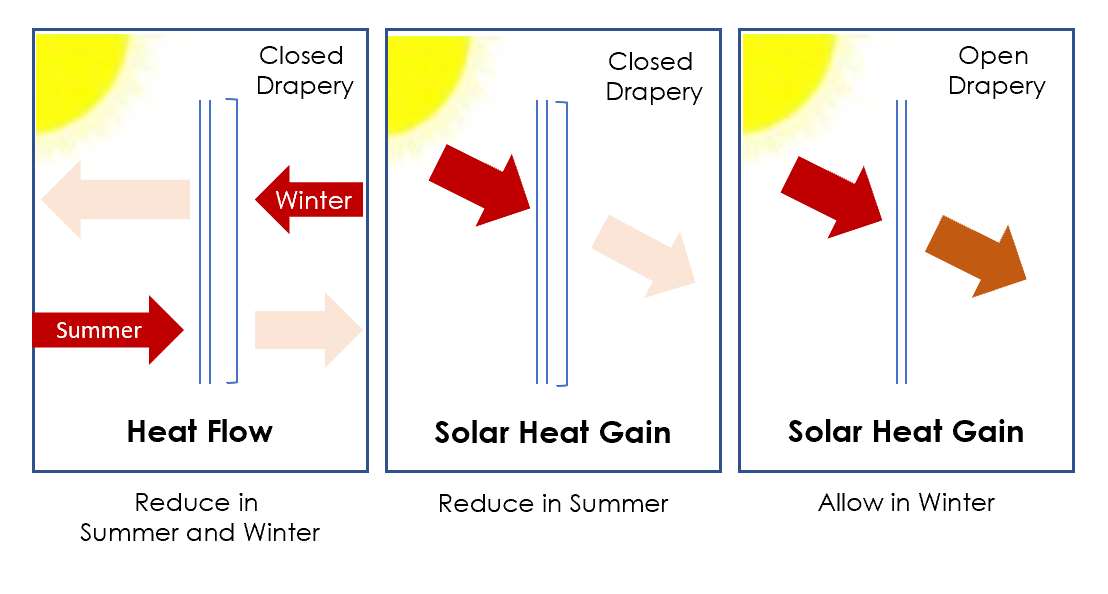
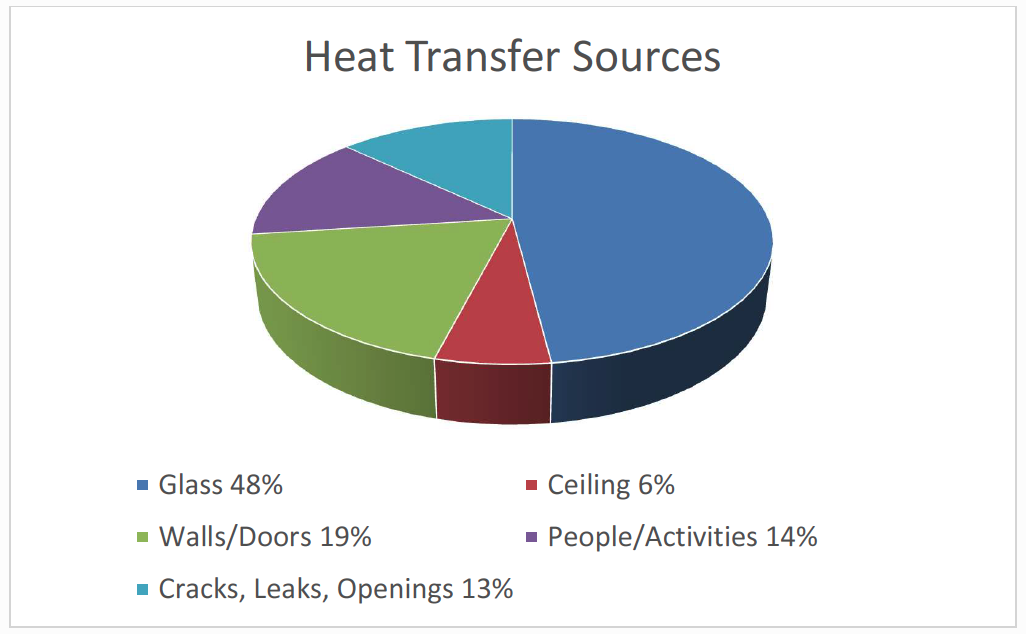
2. Analyze and Determine the Need
- Did you know that glass accounts for 48% of the heat transfer in your home?
- Prioritize the windows that will make the most difference in your home’s comfort.
- The orientation of the windows will affect the amount of sunlight coming through them. West, east, and south facing windows usually have the most sun exposure so control this in the summer and allow the sun in during the winter. North facing windows receive almost no direct sunlight. Consider this in your drapery design.
- While the glazing on window glass can protect against UV rays and reduce some heat transfer, it will not stop solar heat gain. Your drapery will help with that!
- Also, consider the function of the room – understand who uses the room, what they do in there and what time of the day they do it so you can account for light and climate control needs.
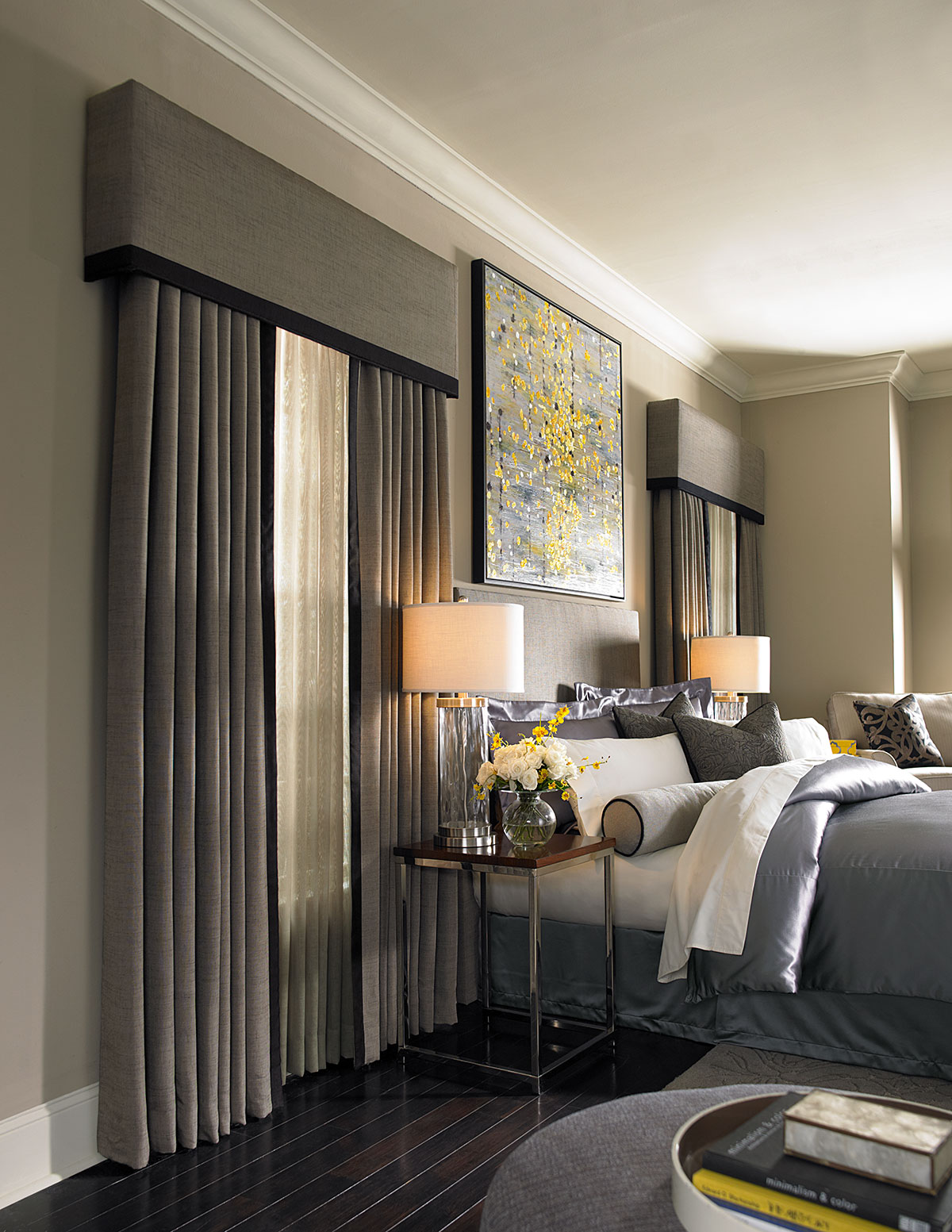
3. Select the Product
- Full draperies with a cornice above provide the best insulation. The cornice prevents insulating air from escaping out of the top while the drapery returns prevent escape from the sides.
- The additional layer of sheers behind the drapery provides soft light as well as an added layer of fabric. The over‑drapery can be open or completely closed for maximum control over heat transfer and solar heat gain.
- Fully functioning draperies with light filtering lining can allow light in but can also help control heat transfer and solar heat gain. Best used for windows requiring less control such as north facing windows.
- A flat Roman shade can control most of the light while the cornice and side panels not only complete the beautiful design but provide added insulation at the top and sides to prevent heat transfer.
4. Select the Fabric
- There are so many fabrics to choose from. Determining how much control you need over heat transfer to maximize the comfort of the home will help you decide.
- Tighter weave fabrics will provide more of a barrier, so save the loose weave fabrics for areas that are not so sensitive to heat transfer or solar heat gain.
- Remember to educate your customer on how to use their traversing drapery to control the climate in their home. Close the drapes in summer to prevent heat gain, open them in winter to add heat! Close the drapery in winter to keep heat inside, especially at night.
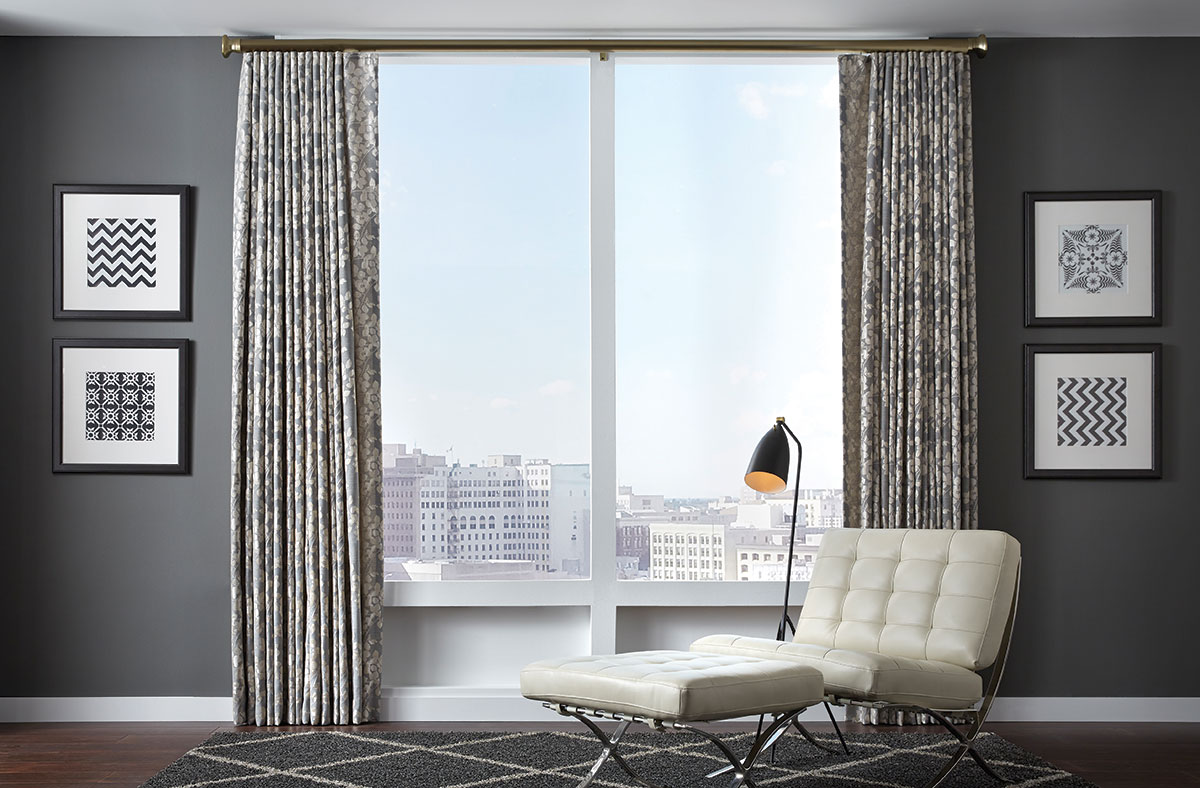
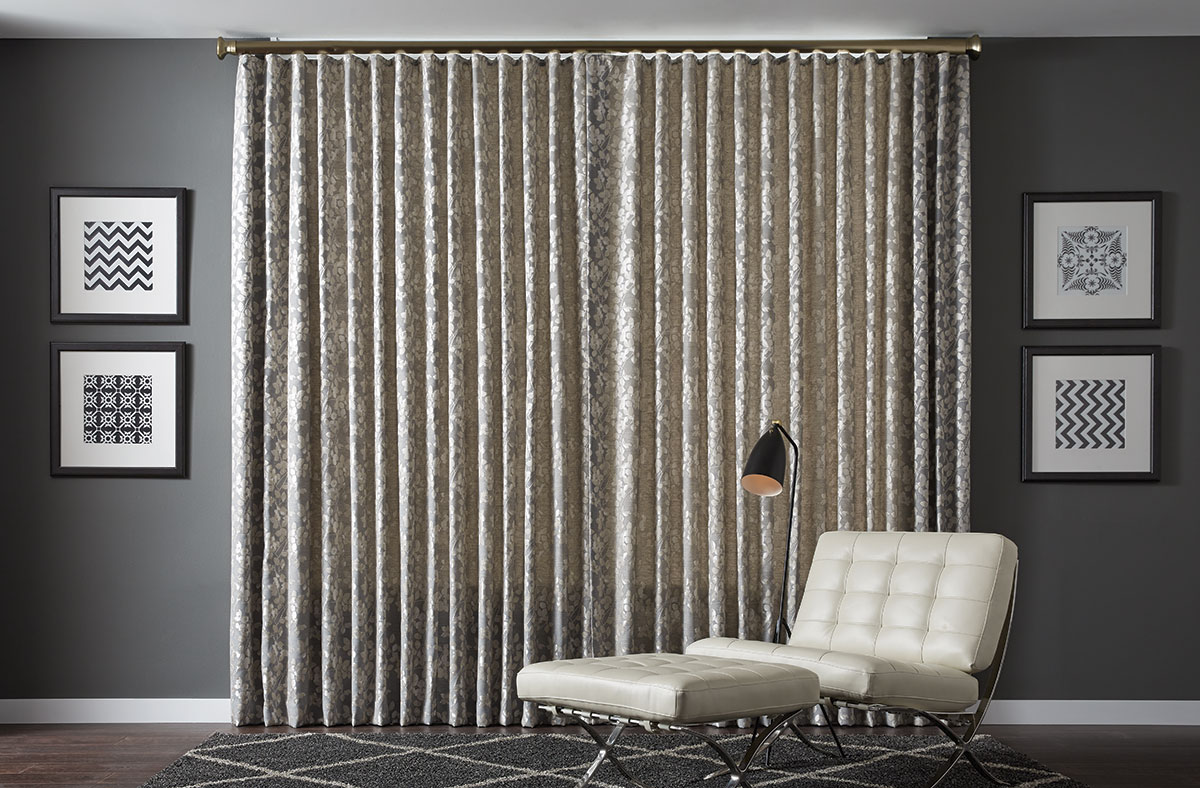
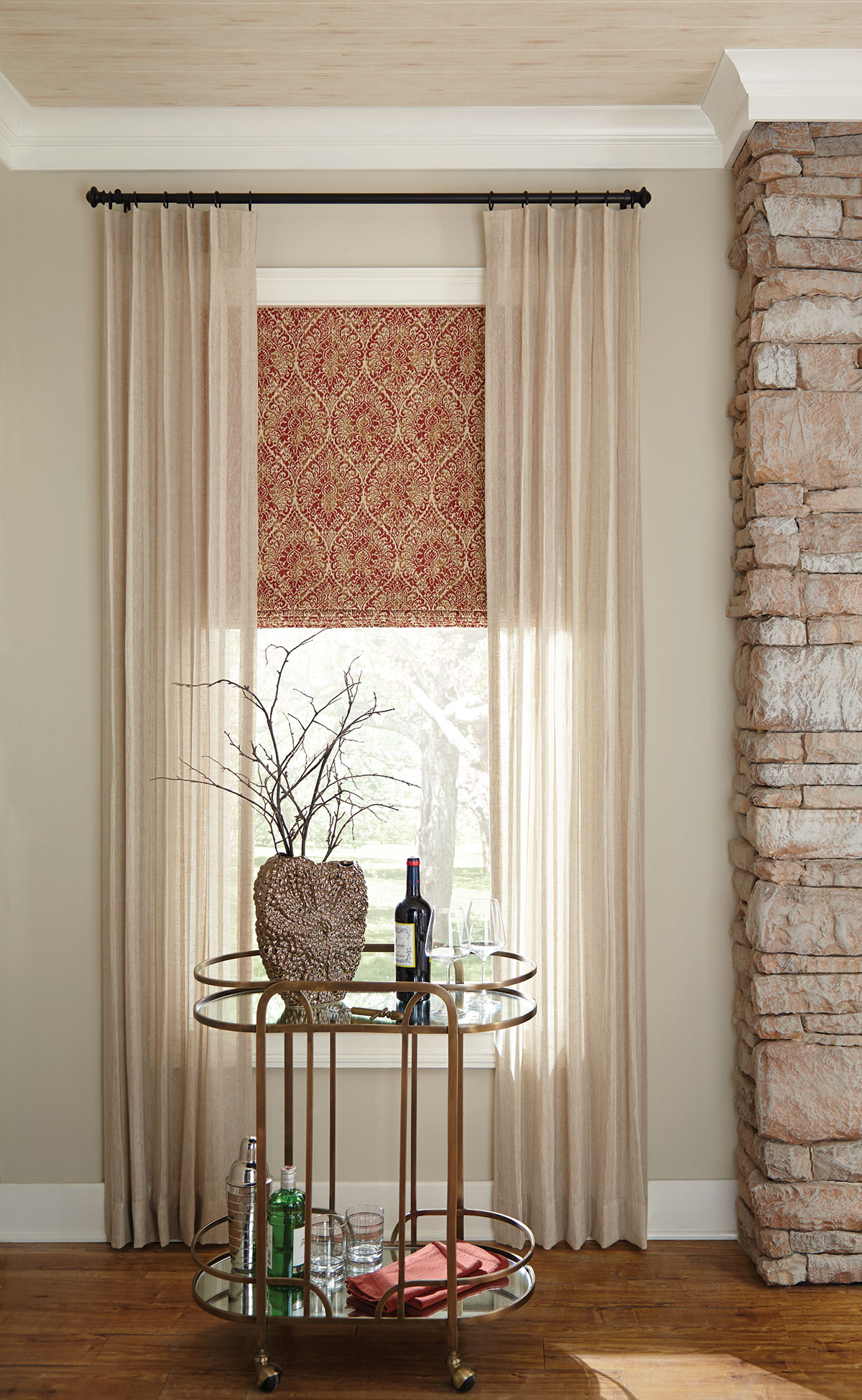
5. Select the Lining
- Lining choices give you options from no lining at all to a full blackout insulated lining in your window treatment. An unlined drapery will not provide much insulation and the face fabric can be harmed by sun exposure, so you might want to use this type of treatment in a north facing window or one that is shielded from the sun by trees.
- If you desire the unlined loose weave look on a window that needs sun or heat control then use a soft Roman shade with blackout lining to control the heat transfer and use your unlined drapery as the decorative side panels.
6. Other Considerations
Motorization:
- If you have multiple windows in a room where you will be raising and lowering shades to control heat transfer, consider motorizing them. Your time is worth money!
- Using four windows as an example, let’s say it takes five minutes to manually raise the shades, and then five minutes to lower the shades later totaling 10 minutes a day, 365 days a year. That’s about 61 hours a year spent raising and lowering shades in just one room! With motorization you can operate all four at once reducing time spent to two minutes a day or about 12 hours a year. Well worth the investment to motorize!
Top Down Bottom Up:
- If you need to control the sun but also allow light into your room, consider a TDBU shade. You can lower the shade from the top or raise it from the bottom giving you the ultimate control over sun, light, and privacy.
Carole Fabrics offers more in‑depth training in our webinars. Log in to carolenet.com to sign up. We look forward to seeing you!

Susan Pfingst
National Training Coordinator
With over 35 years in the Home Design Industry, Susan brings her extensive experience in design and sales. Training is her passion and she looks forward to sharing her insight!

